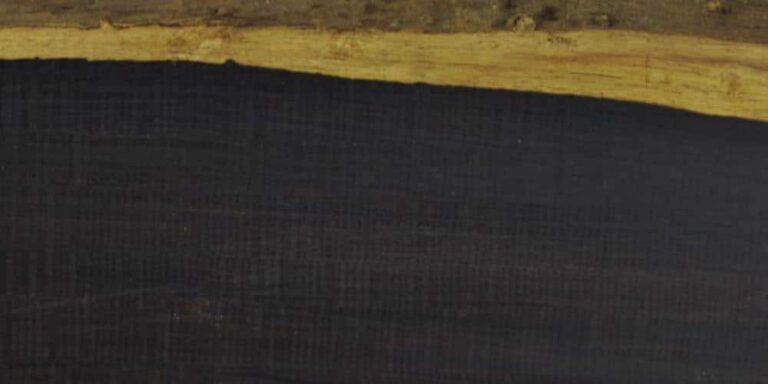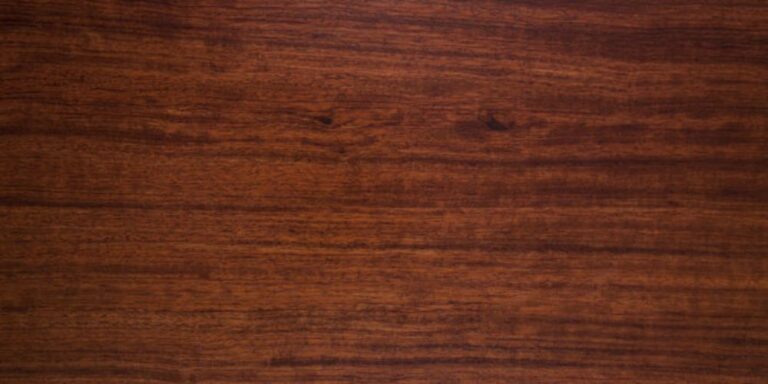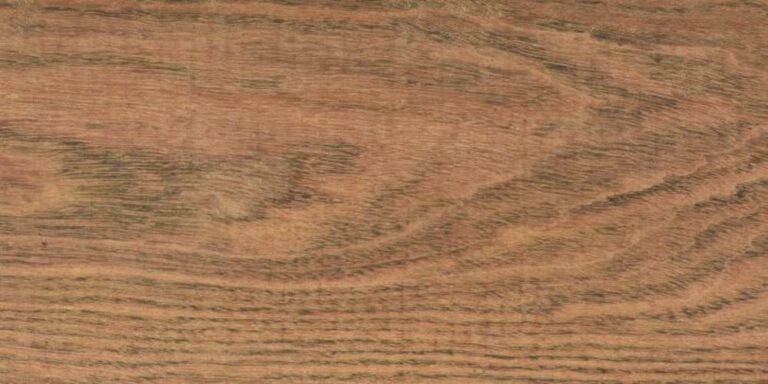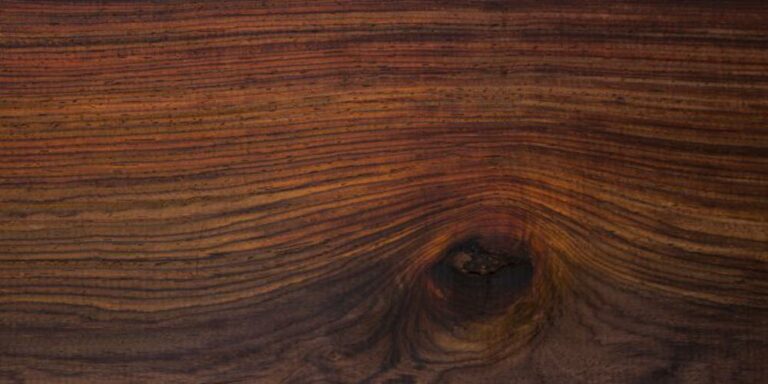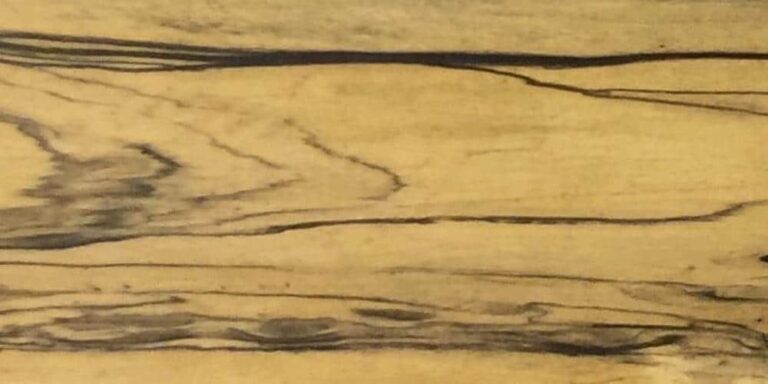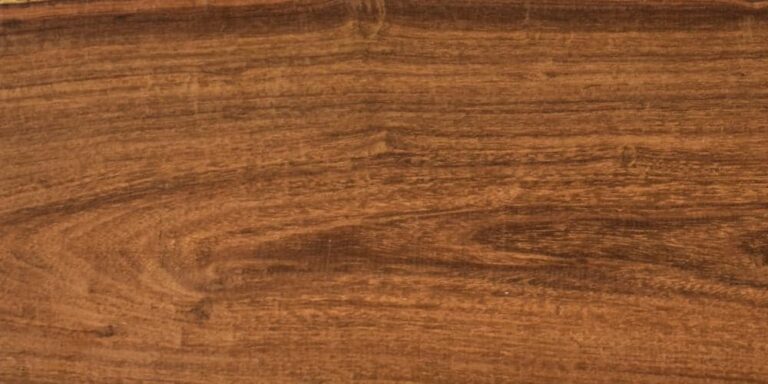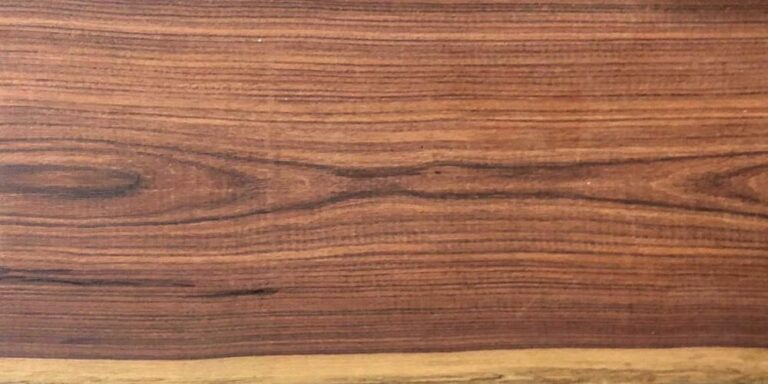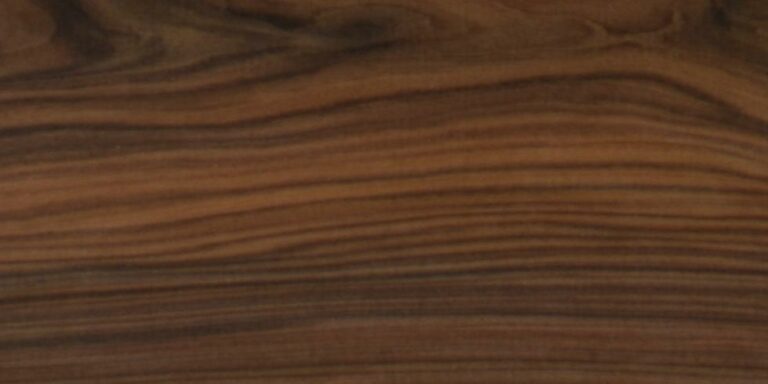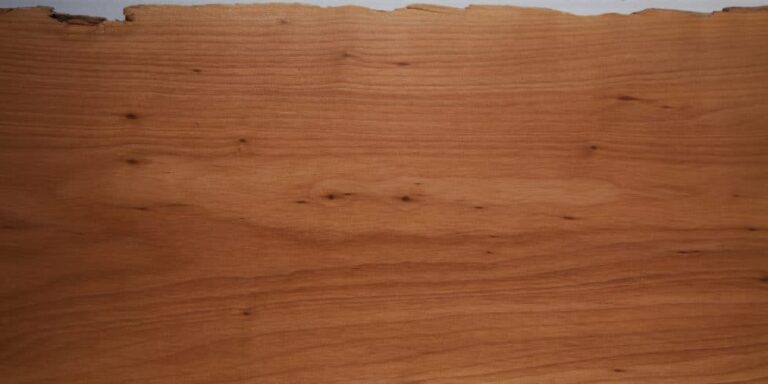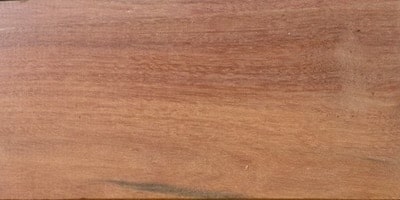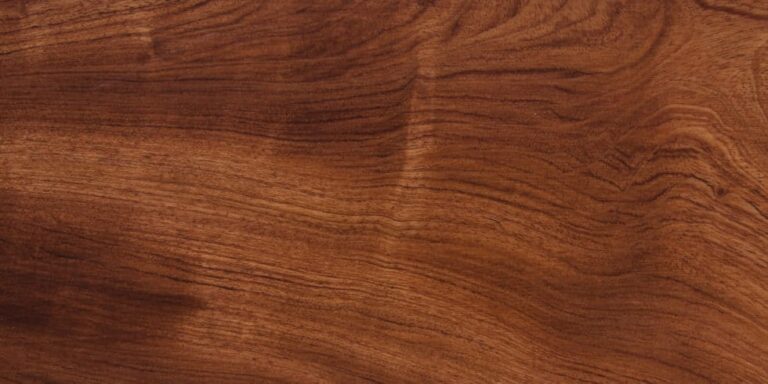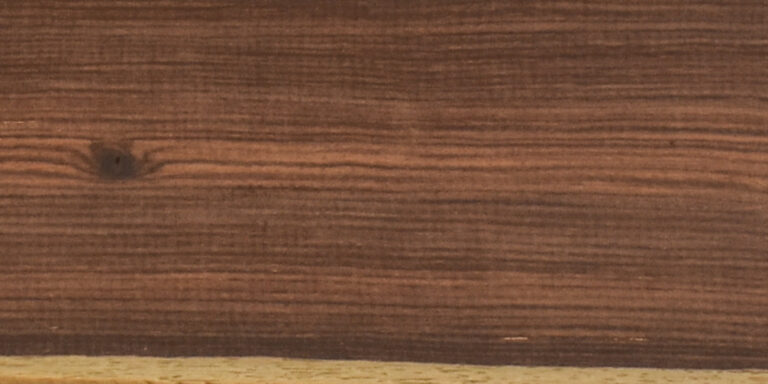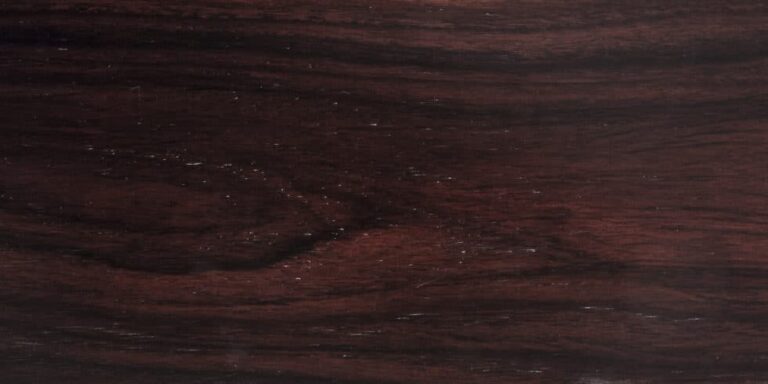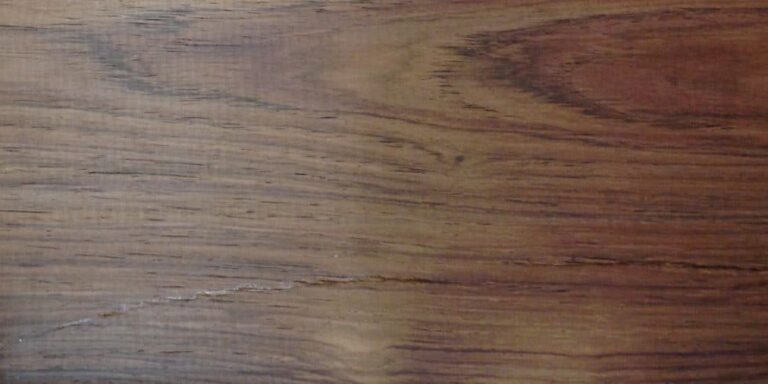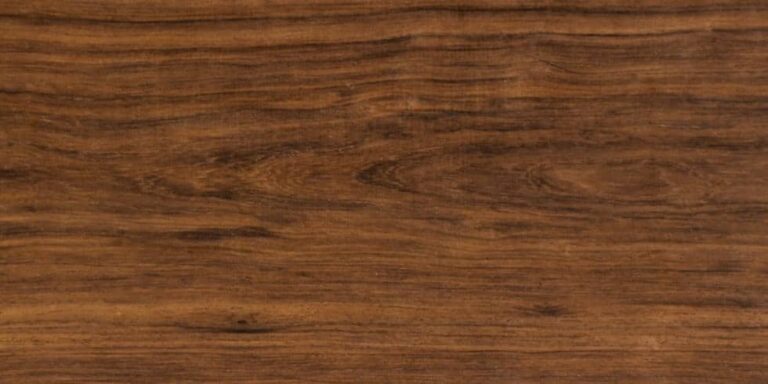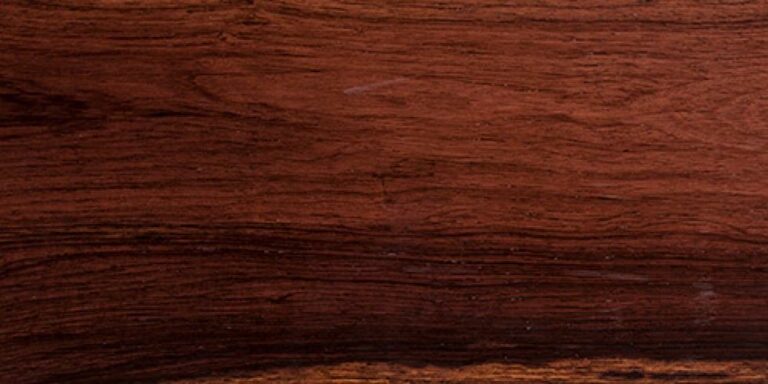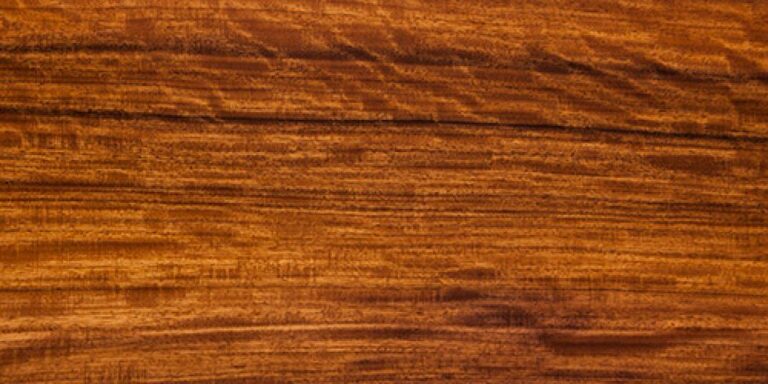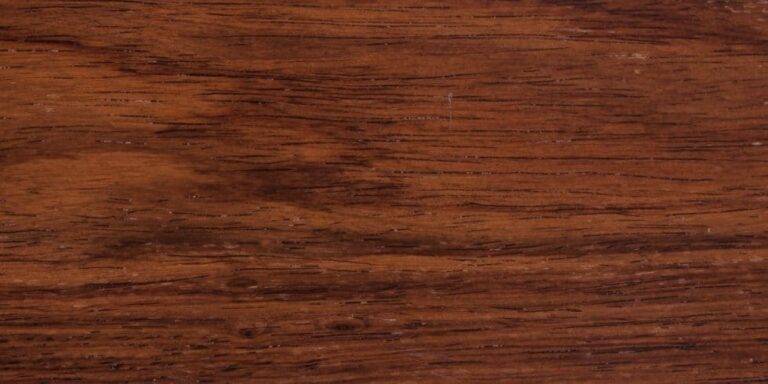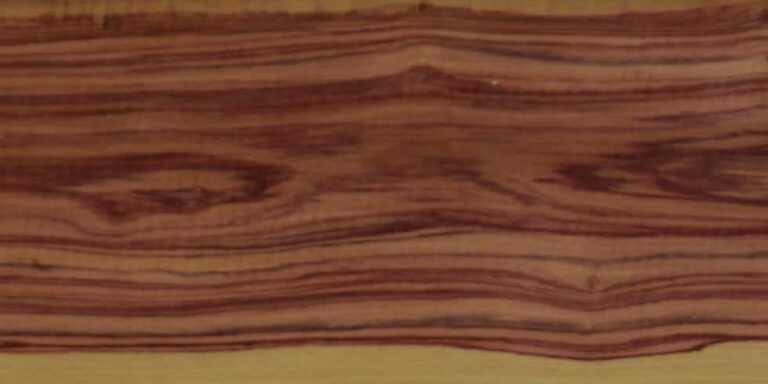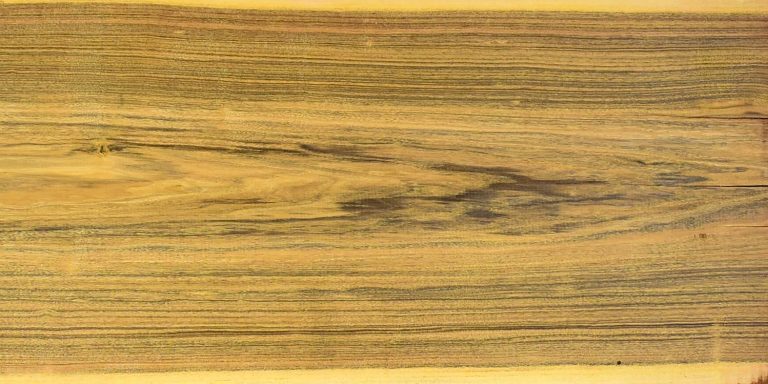Denser than East Indian Rosewood, Honduran Rosewood is well known for being the preferred wood for Marimba bars, with its ringing, well-rounded tonal properties. It compares well to Brazilian Rosewood (many claim it actually superior), producing a well-balanced acoustic guitar, with great projection and strong lows and highs. (In fact, during the '50?s and '60?s, the great flamenco guitar crafters considered it to be the only acceptable substitute to Brazilian Rosewood.)
Honduran Rosewood's grain lines are unusually tight and straight (though sometimes wavy or interlocked). The color ranges from a medium tan to a brownish brick red color, medium brown (sometimes with a purplish tint) or even a medium to dark burgundy, with occasional dark brown or black ink lines. Due to the wood's density and high oil content, it can be difficult to cut, machine and glue. Its texture can range from fine to medium; (not unlike Braz Rw) it is porous, and those pores are usually medium- to large-sized. As would be expected -- given its oily nature -- the wood has a rich natural luster.
Honduran Rosewood has grown difficult to obtain in recent years, due to a poaching epidemic in Belize which victimized the species in 2011 and 2012. Despite a wane in its supply lines, demand for the wood remains constant. Every major source we could find were unanimous in listing "2200 lbf" as the Janka Hardness rating for this wood, but we consider this figure to be very suspect. Most knowledgeable sources compare its weight and density to Brazilian Rosewood. The same sources list Bocote's Janka Hardness at 2200 lbf, also, and the Hon Rw examples we have handled are far more dense than any Bocote. (Some darker examples were more along the lines of a Cocobolo-type density.)
